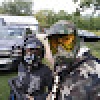In the Aurora Borealis
Green is _____
Red is _____
Green - oxygen
Red - nitrogen
Aristotle thought that…
-The earth was located at the center of the universe
- The heavens were perfect and the earth was imperfect
Plato thought that…
- the heavens were perfect
- the heavens were made up of a combination of circles turning at uniform rates (Uniform Circular Motion)
- Geocentric Universe
Geocentric
the earth is the center of the universe (it's not)
Ptolemy thought that…
- explained that the planets follow small circles around to orbit of the earth
- these circles were called "epicycles"
Epicycles
the circles that the planets follow while orbiting the earth (No.)
Deferent
larger orbits around the earth (no.)
Copernicus thought that…
- developed a heliocentric universe (thank god)
Tycho Brahe thought that…
- stated that the earth was the immobile center of the universe around which the sun and the moon moved
Johannes Kepler thought that…
- stated that the orbits of the planets were ellipses
- stated the planets sweep over equal area in equal intervals of time
Ellipses
a closed curve around 2 points (foci) such that the total distance from one focus to the curve and back to the other focus remains constant
Orbital Period
the time it takes a planet to travel around the sun
Galileo thought that…
- stated that the moon was not perfect, was made of mountains and valleys
- Milky Way is made up of a myriad of stars
- Discovered Jupiter and its moons
- Discovered sun spots
- showed that the sun also rotated using these sun spots as evidence
- explained "retrograde motion"
Retrograde Motion
the apparent backwards motion of a planet as earth overtakes it
Issac Newton thought that…
- Three Major Laws
a. Law of Inertia
b. Law of Force
c. Every action has its own equal and opposite
reaction
Law of Inertia
An object at rest remains at rest, and an object in motion remains in motion at constant speed and in a straight line unless acted on by an unbalanced force
Law of Force
the force on an object is equal to its mass times its acceleration
Newton's Third Law
for every action there is an equal and opposite reaction
Universal Law of Gravity
the force of gravity between two objects (their mass) is inverse to their distance squared
Orbital Motion
- Circular Velocity
- Escape Velocity
Circular Velocity
the velocity needed to remain in orbit around a large body
Escape Velocity
the velocity needed to leave a body
Geosynchronous Motion
how a satellite remains in a fixed position above the earth; (of an earth satellite or its orbit) having a period of rotation synchronous with that of the earth's rotation
Light
- both a wave and a particle
- made up of electric and magnetic waves that can travel through space
- referred to as electromagnetic radiation
- based on both frequency and wavelength
Short Waves
strong radiation
Long Waves
weak radiation
Electromagnetic Radiation
a kind of radiation including visible light, radio waves, gamma rays, and X-rays, in which electric and magnetic fields vary simultaneously
The EM Scale
composed of (listed strongest to weakest) rays:
- gamma
- x-ray
- ultraviolet
- visible light
- infrared
- microwave
- radio (UHF, VHF, FM, AM)
Optical Telescopes
- Refracting
- Reflecting
Refracting Telescope
large lenses to gather and focus light
Reflecting Telescope
uses concave mirror to focus light
Three Major Aspects of Telescopes
- Light Gathering Power
- Resolving Power
- Magnifying Power
Light Gathering Power
the larger the lens of mirror, the larger the amount of light it can collect
Resolving Power
- the larger the telescope, the less light distortion, the higher the resolving power
- reveals fine detail
Magnifying Power
high magnification does not mean more detail
Magnification
determined by taking the focal length and dividing it by the power of the eyepiece
Light Pollution
the brightening of the night sky by light scattered outdoors by artificial lighting
Types of Telescopes
- Radio Telescopes
- Infrared Telescopes
- Ultraviolet Telescopes
Radio Telescopes
for radio radiation
Infrared Telescopes
- for infrared radiation
- must be operated at a high altitude in excess of 13,500 feet to maximize the effect of water vapor in the atmosphere
Ultraviolet Telescopes
- for ultraviolet radiation
- must be in orbit to be effective





